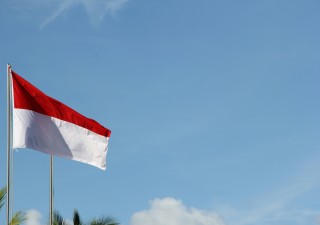As an important component of the cultural industry, the animation industry is a vital sector both in China and around the world. Despite reduced growth in the industry globally due to Covid-19, the animation industry is still the backbone of growth in the cultural industry. This article briefly analyzes such issues as trademark protection and brand operation in the animation industry, in light of specific business operation methods in the commercialization of animation works and products, and international cooperation in the Chinese market. The protection offered by trademark and copyright, as discussed in this article, overlaps in many aspects. We neither encourage evaluating the importance of trademark protection and copyright protection in the commercialization of animation works in isolation, nor accept overemphasizing the significance of either one and ignoring the other. Instead, we encourage an effective intellectual property protection system that combines both trademark and copyright protection.
The animation industry, with creativity at its core and with animation and comics as its main forms of expression, generally refers to the industry of development, production, publication, broadcast, performance and sale of direct animation products, including cartoons, comic books, newspapers and periodicals, films, television, audio-visual products, stage plays and new animation varieties based on modern information communication technology, as well as the industry of production and operation of derivative products, such as clothing, toys, video games and theme parks. It is a sunrise industry with a wide range of development and application scenarios. The ecological chain of the animation industry is also extremely large and complex. From the perspective of directly related industrial content: content producers in the upstream of the industry includes animation authors, animation studios, animation production companies; content dissemination channels in the middle of the industry includes cinema, television stations, online animation platforms and video platforms; and monetization of IP derivatives in the downstream, such as development and sale of physical derivatives, and development and operation of pan-entertainment contents. The audience has also grown from young children and teenagers to an audience group of older age and stronger spending power. In 2021, the audience group of China's two-dimensional culture (ACG: animation, comics, and games) has exceeded 400 million, and the economic driving effect brought by it is huge. In Beijing alone, the total output value of the animation industry in 2021 has reached Rmb120.309 billion (US$17.5 billion), while in other cities such as Chengdu, Chongqing, Wuhan, Changsha, Suzhou and Xi’an, the development of the animation industry and the training of animation talents is also very healthy and mature. It is estimated that by 2026, China’s animation industry market will exceed Rmb450 billion (US$65.5 billion).
Before being presented to the audience and the market, an excellent animation work does not guarantee a hit in the market, and the work may experience a long period of cultivation and dormancy. For example, the Peppa Pig cartoon, which has become popular in recent years, was first released in the United Kingdom in 2004 and became a hit in mainland China in 2015. Before 2015, few people in China knew about this cartoon. The emergence of a blockbuster IP itself is a mix of contingency and inevitability: not every IP work is lucky enough to become a blockbuster, but every IP work should be well-prepared to become a blockbuster at any time.
The core of the commercialization of animation products lies in the realization of various forms of commercialization through licensing. Among the various forms of licensing, the most crucial and common one is the license of right of communication through information networks and the distribution right with respect to the animation work itself, and the merchandise license with respect to derivative rights to the work. In international licensing of animation works, the right of communication and merchandizing rights may be licensed to the same distributor, while in many cases, they may be licensed to different distributors. During the licensing process, the stability of the intellectual property rights, especially the trademark rights, becomes the key to the successful implementation and realization of IP in the entire process of communication, licensing and development and utilization of IP derivatives.
Generally, the title of an animation work (both in Chinese and English), the logo of the animation work in use, the name of the main character (both in Chinese and English, and localized nicknames), and the images of the main character can be registered and protected as a trademark and market monitoring and trademark database monitoring are conducted on a long-term basis with an aim of infringement prevention. These assets have a huge impact on the monetization of IP derivatives in the downstream, and trademark protection will provide stable support for legitimate development and utilization of IP derivatives. At the same time, the selection of trademark classes should cater for the needs of right holder’s own use and the possibility of expansion of right and should not adopt limited protection schemes only to meet the needs of short-term practical use. Once an animation work becomes or is likely to become a hit in the market, infringers will react far faster than the rights holders themselves. If the rights holders want to get back their own trademark right after the trademarks are preempted or squatted by the infringers, it would be exponentially more difficult and costly, and it is uncertain whether the right holder will succeed.
If an animation work is primarily targeted at the international market, or is very likely to appear in overseas regions other than its home country, it will become important to adopt a communication strategy appropriate to the target country and region during the process of communication, distribution, licensing and development and utilization of IP derivatives, including localized renaming, localized dubbing, localized subtitling and content deletion in compliance with the laws and regulations of the target country and region.
The most important step of localization is renaming, which includes the renaming of the title of the animation work and the renaming of its main characters. For example, in China, the localized names are often completely different from the original names of the animation works. The localization workers’ understanding of the target market and culture and wisdom has given the work a new life. For example, the original title of an animation work may be the name of the main character or a clue character, which, after localization in China, has evolved into the storyline of the work (such as the famous cartoon Coco, which has been renamed as Dream Quest in China). Creative localization will not only facilitate effective dissemination the original animation work in the target country and region, but also enhance the brand value and reputation of the original animation work itself and the producer. Therefore, the original name and the localized name of the animation work should receive the same level of attention in the target country and region.
In the process of international distribution of an animation work, there are many cases where the right holders do not know the specific localized titles and character names of their own animation work in the target country and fail to apply for registration of trademark of the localized names in a timely manner. The trademarks of localized names are then preemptively registered or squatted by unrelated entities, resulting in the loss of a large number of trademark rights. Even if the right holders manage to get back the trademark by various means, they often need to pay high prices and have to bear the risks of loss. It is advisable for distributors and agents in the international distribution to communicate and agree as much as possible in the early stage, to clarify the work of trademark registration of localized content and the ownership of the trademark, so as to avoid that unclear ownership of the intellectual property rights affects the operation of each party after expiration of cooperation.
In the international distribution of an animation work, it is often necessary to explicitly stipulate such arrangements as distribution channels, rights of the parties, the target animation work, project specifications, cooperation period, geographical territory, nature of cooperation (exclusive or non-exclusive), payment schedule and method, method and media of delivery, sub-licensing right and other general provisions. The development of science and technology has also brought about a profound influence on the communication of animation works. Perhaps in the near future there will be new channels and approaches which are unimaginable for us at present. Therefore, the protection plan and approach for animation works should keep pace with the latest trends, and be mindful of and adapt to the influence of any new developments to the work.









